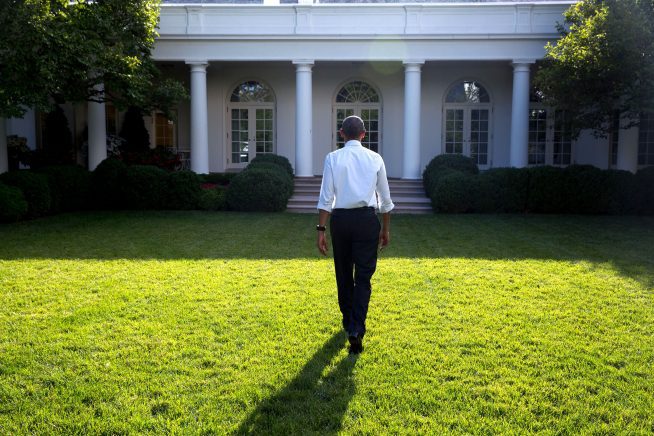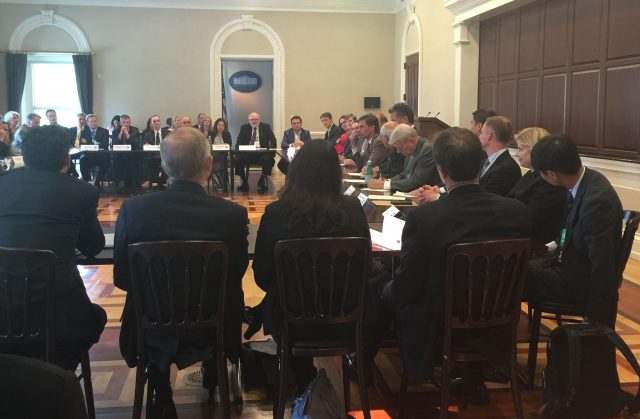
President Barack Obama has signed new executive actions and commitments on the part of 33 state governments and private-sector companies to accelerate integration of renewable power generation and advanced energy storage systems. At least 1.3 gigawatts (GW) of new energy storage procurement or deployment is expected over the next five years as a result, the White House announced June 16.
The new clean energy initiative was announced as the President hosted a Summit on Scaling Renewable Energy and Storage with Smart Markets at the White House. Representatives from regulatory bodies, power companies, municipalities and project developers attended.
The announcement marks the latest in the President’s ongoing efforts to marshal the resources and coordinate the activities of key public and private-sector stakeholders in order to accelerate the transition to a low-carbon economy and society. Numerous and varied in scope and scale, the commitments announced during the White House summit should provide an added boost to a U.S. energy storage market that’s been growing at a torrid pace, albeit from an initial small base.
White House Summit’s renewables-energy storage commitments range far and wide

Furthermore, the commitments made during the White House renewable energy storage summit will enhance grid reliability, resiliency and efficiency, bring down power-sector CO2 and other greenhouse gas emissions, and provide a welcome boost in terms of domestic job creation.
In their latest, 2015 annual report, Energy Storage Association (ESA) and GTM Research determined that newly installed energy storage capacity grew a record-setting 243 percent rate year-over-year (YoY) nationwide in 2015, rising from 65 MW/86 MWh in 2014 to 221 MW/161 MWh. 2014’s tally, in turn, was 88 percent higher than 2013’s total.
The following number among the long list of key developments highlighted and summarized in the White House press release:
- A new report by the White House Council of Economic Advisers on the technical and economic considerations and opportunities relating to the grid integration of renewable energy resources.
- The federal government committing to increasing its storage and microgrid capacity through programs that will make our federal and military bases more resilient and provide funding for microgrids in rural communities.
- The U.S. Department of Energy promoting access to and standardization of energy data.
Sixteen developers and power companies in at least eight states announcing new storage procurement and deployment targets for the next five years. - Investors announcing $130 million in new funding commitments for energy storage. In aggregate, these new procurement, deployment, and investment commitments announced today could lead to approximately $1 billion in investments in energy storage.
- Power companies and developers committing to deploy smart water heaters, smart meters, and demand response programs.
There’s a lot more, just a few of which – all pertaining to federal actions – follow:
Federal Executive Actions on Smart Markets and Energy Storage
- White House Council of Economic Advisers is releasing a report titled “Incorporating Renewables into the Grid: Expanding Opportunities for Smart Markets and Energy Storage.” One of the report’s key findings is that current and projected levels of variable renewable energy resources are opening up opportunities for technologies such as energy storage and demand response to ensure the reliable and cost-effective supply of electricity. The report also finds that wholesale market reforms are already helping to enable these technologies to participate in some markets. Ongoing cost reductions and advancements in communication infrastructure are expected to further enhance the potential for these technologies going forward.
- Increasing the Federal Government’s Storage Capacity: U.S. General Services Administration (GSA) announces that it intends to issue a Request for Information about building-level energy storage to explore a number of possible storage solutions, in particular for emergency back-up (potentially to replace diesel generators), for enhancing resiliency, and for aiding in demand response management of peak loads.
- Making Our Military Facilities More Resilient: The Navy’s Renewable Energy Program Office (REPO) and U.S. Air Force announce the following new projects and activities:
- U.S. Navy:
– A new 50-100 MW grid-scale battery project that will be developed by a third-party developer at Naval Weapons Station Seal Beach in California.
– A new 7 MW solar photovoltaic (PV) system with a 6 MW (18 MWh) battery system that will be developed by a third-party developer on the local grid at Naval Base Ventura County (NBVC) in California. The project will serve NBVC during electric outages, covering over 65% of the base’s peak loads for up to 3 hours.
– A battery second use (B2U) pilot project in Indiana with Naval Support Activity Crane, Duke Energy, and other stakeholders. The project will repurpose the Navy’s fleet of decommissioned submarine batteries into distributed energy resources to serve mission-critical loads. If the battery fleet is repurposed rather than recycled, the Navy’s overall battery capacity is projected to grow to 44 MWh by 2019. - U.S. Air Force
– The Air Force’s Resilient Energy Demonstration Initiative (REDI) announces the release of a Request for Information to energy developers and technology companies to provide energy assurance services to critical facilities at Beale Air Force Base (AFB) in California. Concurrently, the REDI program is announcing the launch of a new energy assurance collaboration with industry at Beale AFB. The REDI program, which develops and deploys innovative energy resilience technologies and business models, will create a comprehensive energy assurance plan for Beale AFB by the end of 2016.
– The Air Force Research Laboratory and the Hawaii Air National Guard announce the launch of the design phase of a new distributed energy microgrid project at Joint Base Pearl Harbor-Hickam. The project will demonstrate the ability to integrate and demonstrate multiple renewable energy and energy storage technologies, and provide the ability to power critical mission assets during energy disruptions.
– The Air Force announces the launch of the Forward Operating Base of the Future project at Joint Base San Antonio (JBSA). The project will integrate renewable energy, energy efficiency, and energy storage technologies into a simulated deployed environment. The project is expected to reduce the amount of fuel required to power forward operating bases by more than 85 percent.- Promoting Microgrids in Rural Communities: Navy’s Office of Naval Research announces funding for the Alaska Microgrid Innovation and Commercialization project at the University of Alaska Fairbanks. The project will develop practical and cost-effective solutions for operating microgrids that incorporate significant renewable power generation, with a focus on the Arctic and other remote locations and austere conditions. This project builds on the Administration’s Clean Energy Solutions for Remote Communities initiative.
*Image credits: The White House


